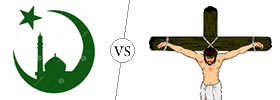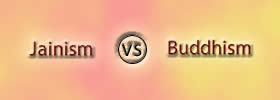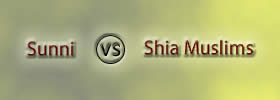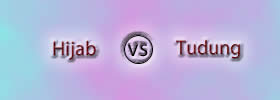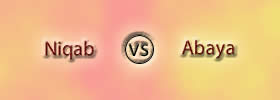Religion & Spirituality
|
God and deity are synonymous with each other. According to their basic definitions, they both represent a supreme power. However, sometimes God as a term is used to represent the only one supreme power, whereas deity can be used to refer to any form of this supreme power and thus can be multiple in numbers. God is generally used in context to male gods, whereas deity can be used to refer to both god and goddess (female gods).
|
|
Essentially, spirituality is of one’s spirit or soul, or of one’s religious beliefs. There is not a definitive definition of it, but spirituality is defined as the search of a God. A religion, on the other hand, is a belief in or the worship of a God. |
|
Essentially the main difference between Muslims and Christians is that Muslims follow the religion of Islam, whereas Christians follow Christianity. Christianity is a monotheistic religion that originated in Jerusalem in 33 A.D. Christians follow the teachings of the Old Testament and the New Testament, which consists of the teachings of Jesus. Islam also believes in the original texts of Judaism and Christianity, but believes that the modern texts have been corrupted. |
|
Masjid or mosque is the place of worship in Islam, it is where the Islamic people directly pray to Allah, known as a salah. A Dargah is a Sufi Islamic shrine or a grave of a Sufi saint. |
|
Jainism is a philosophy or can be referred as an aesthetic religion that was founded by Vardhamâna in India, around 6th century BC. Jainism believes in karma, reincarnation and in avoiding violence. Buddhism is a philosophy or can also be referred as an aesthetic religion that was founded by Siddhartha Gautama. Buddhism explains the ways to avoid the sufferings and to attain happiness. |
|
Christianity is a monotheistic religion that originated in Jerusalem in 33 A.D. Christians follow the teachings of the Old Testament and the New Testament, which consists of the teachings of Jesus. The three main sects of Christianity are the Roman Catholic Church, the Eastern Orthodox Church, and Protestantism, which is further separated into various churches. |
|
Shia is one of the two major sects of Islam, the other being Sunni. Ismaili is a division within the Shia sect. The division is due to the selection of an Imam. |
|
Sunni Muslims and Shia Muslims have different theological beliefs. Shias believe that only the people in the direct line of the Prophet should lead the Muslims. There are many small differences such as how many times a day to pray, how to pray, how they should interpret the Qur’an, etc. |
|
Essentialism states that any specific entity comes with a set of rigid attributes that define who or what it is. The theory states that each object, organism or anything that is in this world has a specific set of instructions and an essential reality behind them. Relativism runs on the opposite lines. According to this concept, there are no absolute truths only relative values. The truth changes depending on the beliefs and social norms. Relativism states that everything is subjected to change depending on perception and consideration. |
|
|
|
Selendang and tudung are two different kinds of clothing that are available to Islamic women. Both, tudung and kerudung are part of the traditional Islamic hijab. It is a scarf which is used to cover the head, including hair and ears. It usually does not cover the face. A selendang is also a scarf; however it is used mainly as an accessory, rather than a strict religious headwear. It can be loosely draped around the shoulders or around the head. It need not cover the hair or the ears. |
|
Hijab and tudung are two different kinds of clothing that are available to Islamic women. A hijab or hejab actually refers to the rules of covering up. However, in the usual everyday context, the word is used to refer to a scarf which covers the head. In Malay, the term ‘tudung’ or ‘tudong’ literally means ‘cover’, however in English it is translated to mean ‘headscarf’ or ‘veil’. |
|
Jilbāb and hijab are two different kinds of clothing that are available to Islamic women. A hijab or hejab actually refers to the rules of covering up. However, in the usual everyday context, the word is used to refer to a scarf which covers the head. A jilbāb has two distinct meanings. The modern jilbāb is a type of clothing very similar to an abaya. It is a loose article of clothing worn over regular everyday clothing. However, in Indonesia, the term jilbab refers to a headscarf that covers the head, including hair and ears. |
|
Niqab and hijab are two different kinds of clothing that are available to Islamic women. A niqab or ruband is a part of the sartorial hijab and covers only the face. It is a form of a veil that covers the face including the ears and the hair. A hijab or hejab actually refers to the rules of covering up. However, in the usual everyday context, the word is used to refer to a veil which covers the head. |
|
Niqab and abaya are two different kinds of clothing that are available to Islamic women. A niqab or ruband is a part of the sartorial hijab and covers only the face. It is a form of a veil that covers the face including the ears and the hair. The headpiece may even cover some, if not all of the neck and chest area. An abaya can be described as a long robe or cloak, usually black in color. It is worn over the clothing and tends to cover the whole body. The styles of abaya vary, many often contain embroidery of some sort, while some may or may not include a hood. |
Pages
 |
 |
 |
 |
 |
 |
 |
 |



